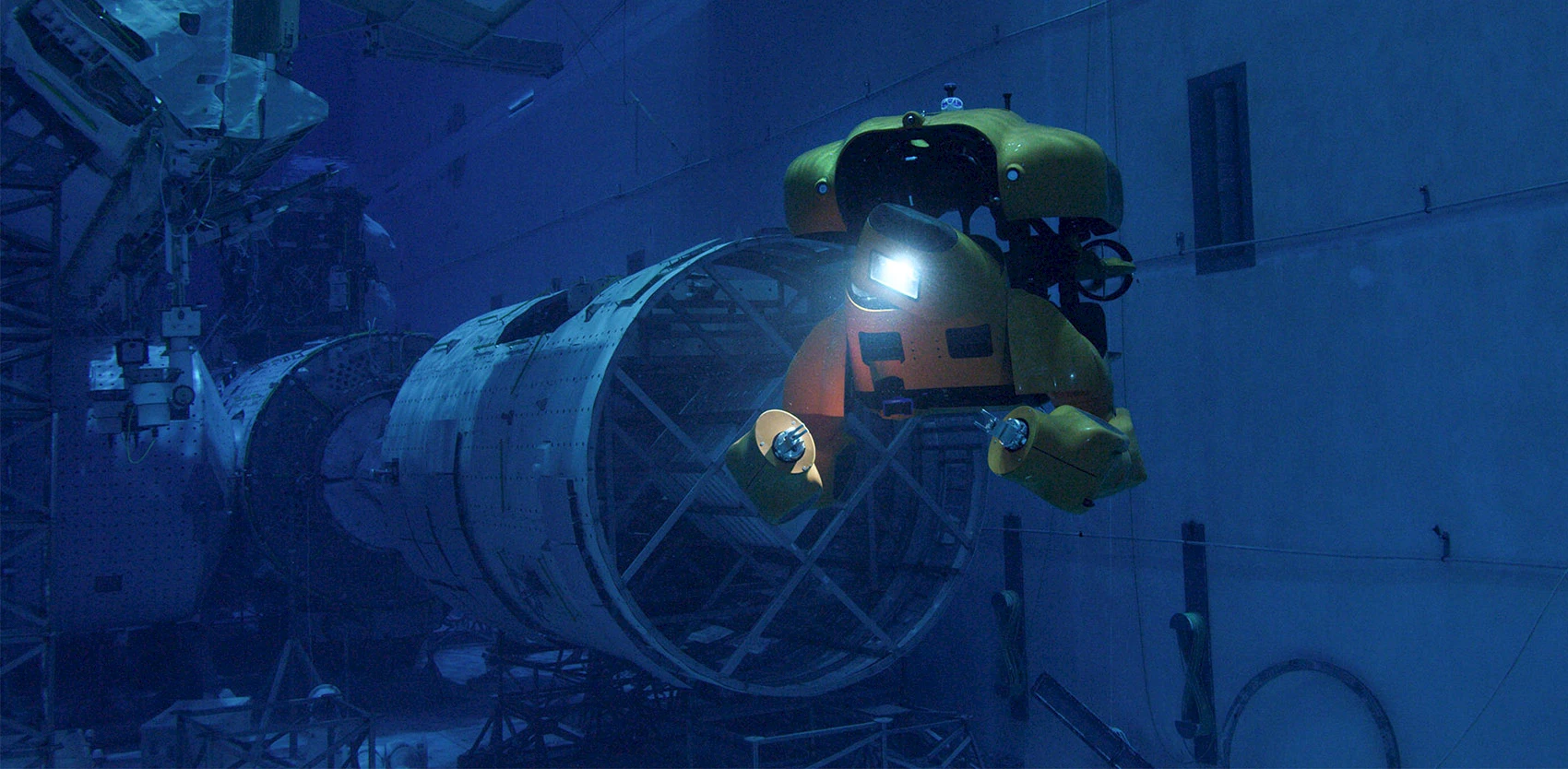Aquanaut, the underwater Transformer
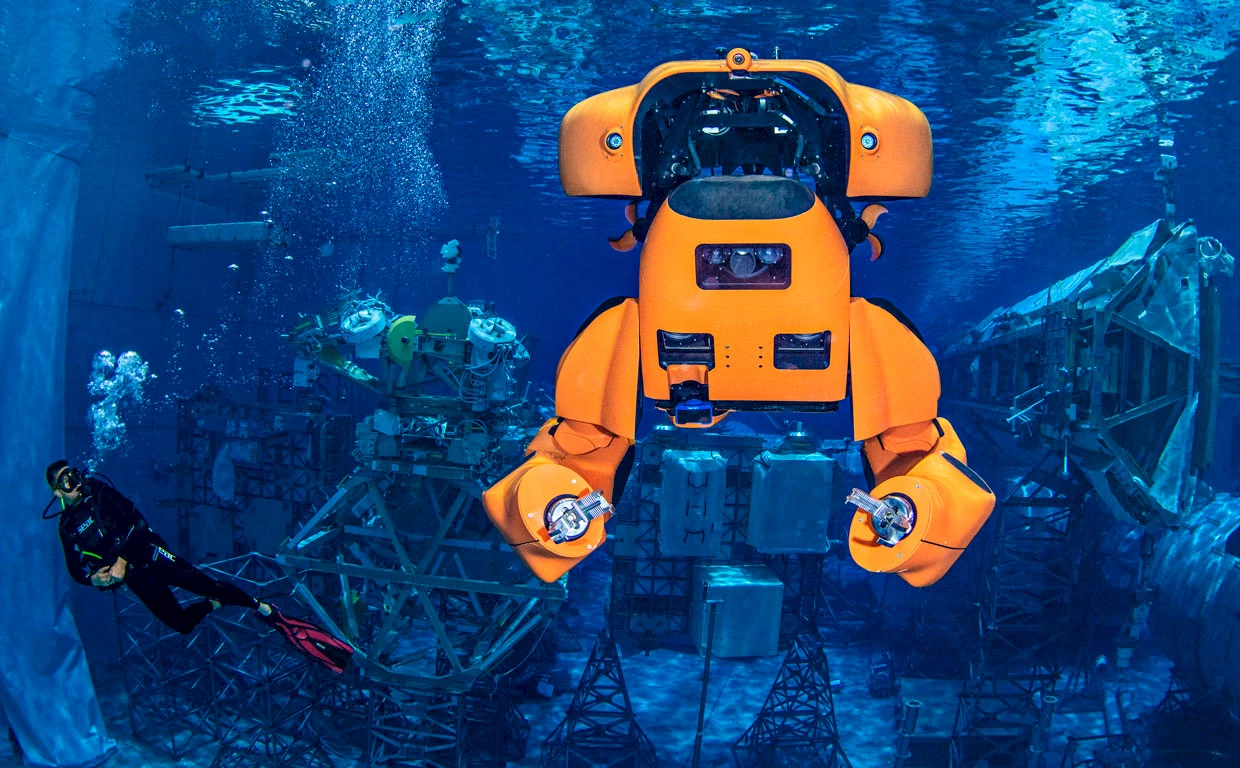
Aquanaut. © Houston Mechatronics Inc.
At first glance, Aquanaut looks like a traditional unmanned mini-submarine, until its hull opens up like a Transformer, exposing two arms that fold out and a head packed full of sensors. The sleek submarine is now a half-humanoid robot, ready to get to work. Developed by startup Houston Mechatronics Inc. (HMI), staffed mainly by former NASA employees, Aquanaut’s design marks a radical departure from traditional underwater vehicles. Shaped like a submarine, it swiftly travels over long distances (up to 200 km) to its destination, where it transforms into a half-humanoid robot to accomplish complex tasks. Aquanaut has been designed primarily for servicing subsea oil and gas installations. The companies that own and operate this infrastructure spend vast sums of money to inspect and maintain it. Currently being tested in the pool that NASA astronauts use for zero-gravity training, Aquanaut should be tested at sea next month.

Aquanaut. © Houston Mechatronics Inc.
⇨ YouTube, “Meet Aquanaut, the Underwater Transformer.”
⇨ IEEE Spectrum, “Meet Aquanaut, the underwater Transformer.”
MicroLED displays coming your way
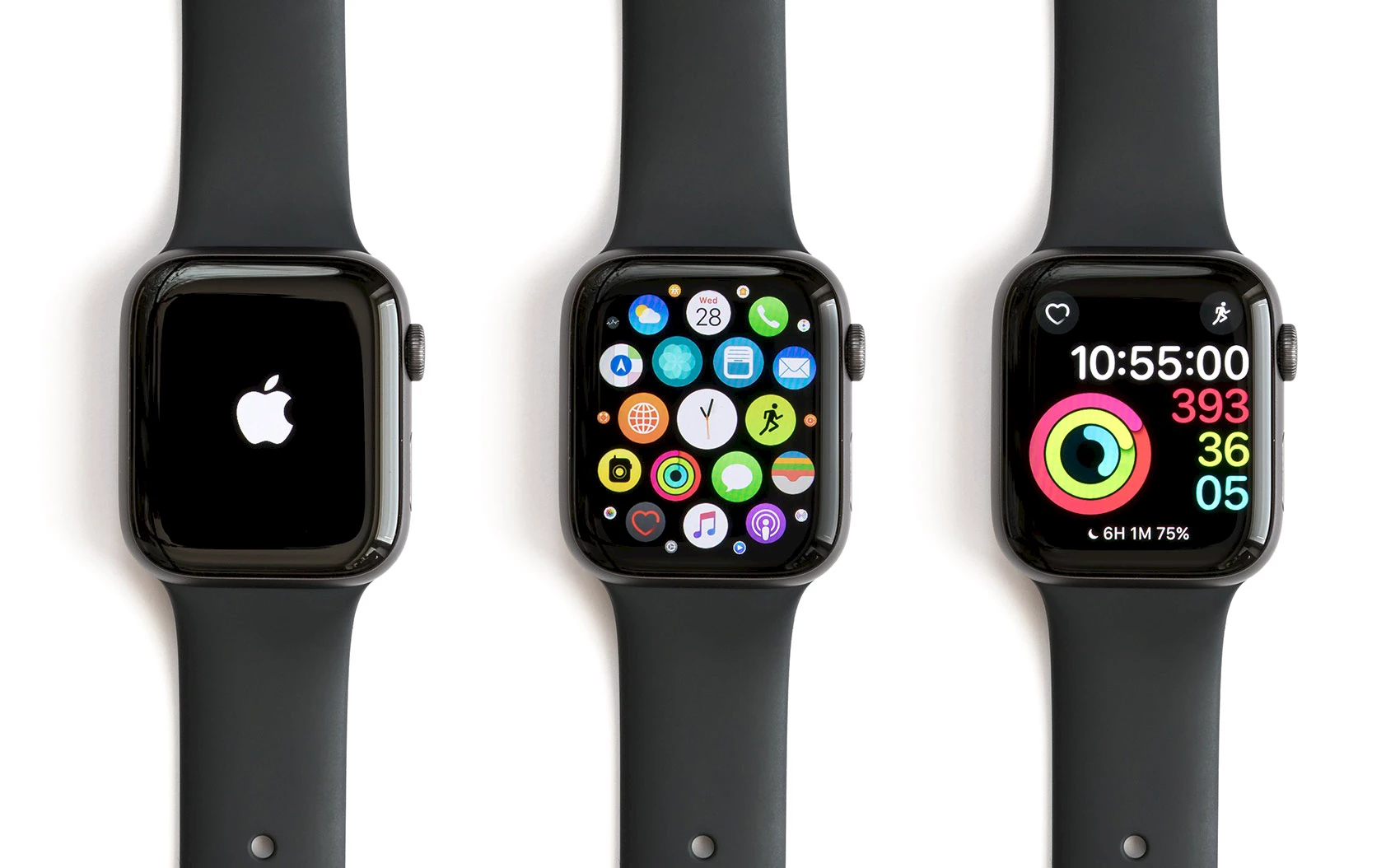
Apple Watch. © iStock.
Apple is close to signing a deal with Taiwanese manufacturers to start using microLED displays in its products as early as next year, according to Chinese newspaper Economic Daily News. According to sources in Apple’s supply chain, the company is set to launch a watch with a microLED display in 2020, replacing LG’s OLED displays. MicroLED displays use different, smaller electroluminescent compounds, which should make future devices thinner, lighter, brighter and more energy-efficient. A previous DigiTimes rumour suggested that Apple was working with Taiwan Semiconductor Manufacturing Company (TSMC), which is already manufacturing Apple chips, including the new SoC A13, to develop microLED panels for Apple Watch. These panels probably use technologies and patents that Apple acquired in 2014 with the purchase of LuxVue, a California company specializing in microLED displays. MicroLED displays offer a combination of brightness and energy efficiency that LCD and OLED technologies just can’t match. MicroLED displays will also be coming soon to a VR/AR headset near you, for example the Oculus.
⇨ AppleInsider, “Apple considering MicroLED display for 2020 Apple Watch.”
Apple to buy Intel’s modem division
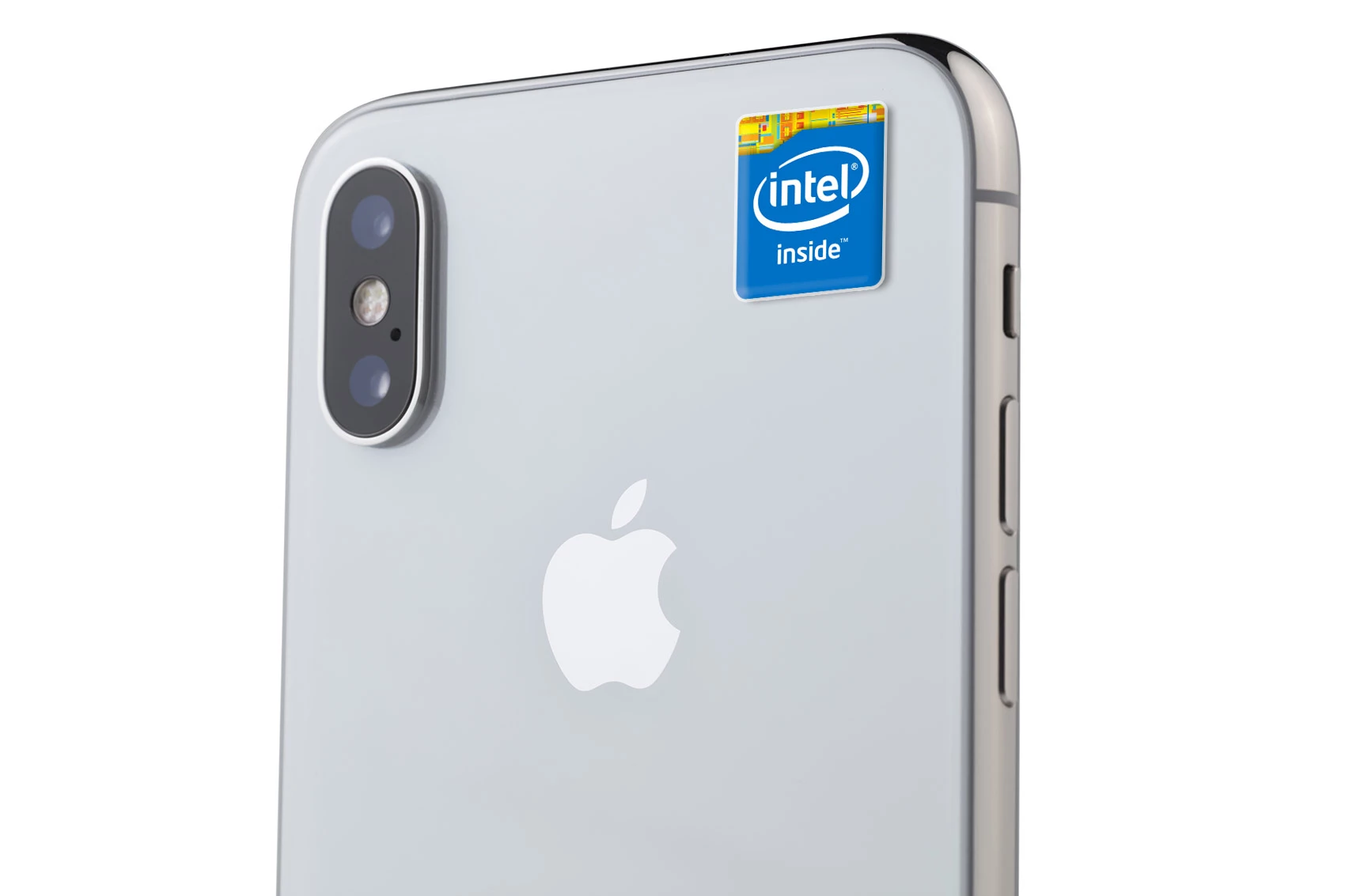
iPhone. © iStock.
Apple is in the final stages of negotiations to buy the bulk of Intel’s modem chip business, The Wall Street Journal reports. The Journal says the deal, valued at $1 billion or more, could be finalized in the next week. The deal would involve the transfer of talent as well as modem-related patents. After the conclusion of the Qualcomm/Apple deal, Intel had announced it would be exiting the market. This purchase is part of Apple’s wider strategy of developing as many components as possible in-house. A team of over 1,000 engineers was already working on an in-house modem chip at Apple. The purchase of Intel’s business could help Apple reach chip self-sufficiency, breaking Qualcomm’s quasi-monopoly.
Update. Apple has confirmed the operation:
Cupertino and Santa Clara, California — Apple and Intel have signed an agreement for Apple to acquire the majority of Intel’s smartphone modem business. Approximately 2,200 Intel employees will join Apple, along with intellectual property, equipment and leases. The transaction, valued at $1 billion, is expected to close in the fourth quarter of 2019.
⇨ Ars Technica, “Apple closes in on $1 billion deal to buy Intel’s modem business: report.”
New Start menu for Windows 10
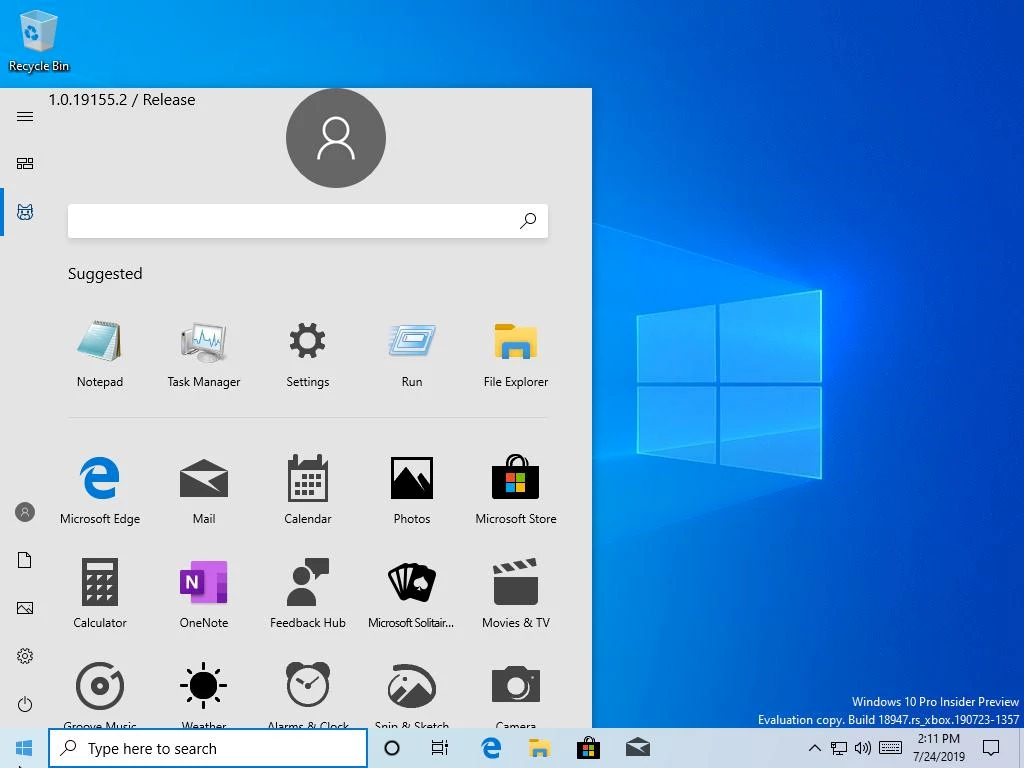
Start Menu. © Microsoft.
A leaked internal Windows 10 build (18,947) has revealed a brand new Start menu experience that replaces tiles with a more traditional grid of apps on a grey background. This Start menu, which looks like it’s still in the early stages of development, is believed to be the Start menu that Microsoft is working on for Windows Lite, a lighter version of Windows 10 in answer to Chrome OS. The leaked build, supposed to be internal, is the result of an issue with Windows Insider. This program allows anyone with a valid Windows licence to access early versions of the OS which were previously only available to developers. The scrapping of tiles on Windows Lite (a concept lifted from the Windows 7 phone OS) could hearken their overall extinction. Maybe Live Tiles have reached the end of the road.
⇨ YouTube, “Windows 10 Build 18,947 - New Start Menu, Emoji Picker.”
⇨ Windows Central, “Leaked internal Windows 10 build reveals new Start menu experience.”
Tori interactive toys
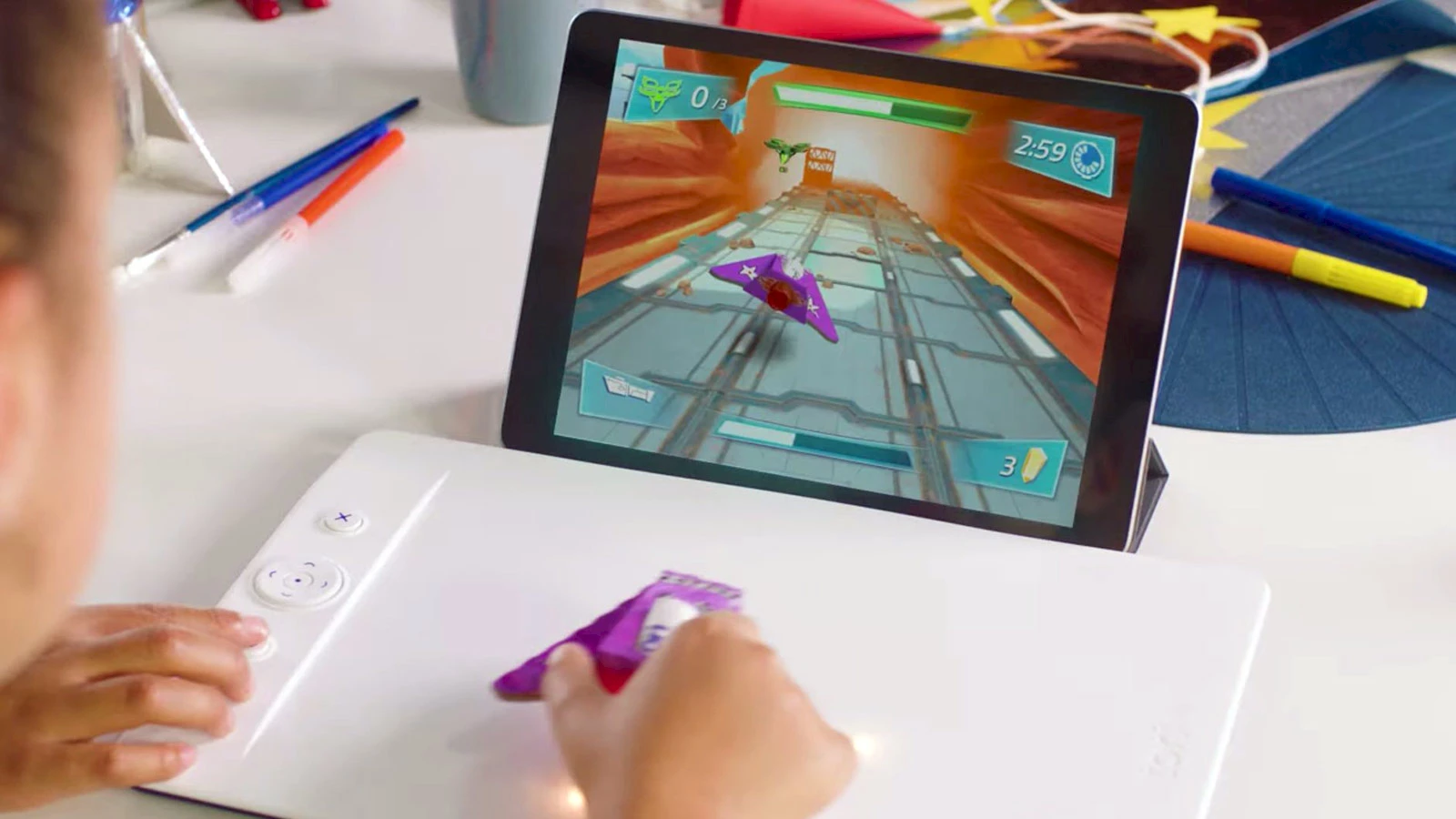
Tori. © Bandai Namco.
Bandai Namco is launching a new platform, Tori, which will combine physical toys with iOS and Android mobile apps. Tori is the product of a collaboration between Bandai Namco and the French technology firm ISKN, which developed the Slate graphics tablet. Tori is described as “a creative and imaginative ecosystem,” primarily targeted at children between the ages of 6 and 12 years old. Using technology called “Mirror Play”, children can use physical toys to control and interact with digital apps. The platform will launch on October 2 with the Tori Explorer Pack, which will include three physical items that can interact with the software (via a Tori Board tablet that detects toy movements): a wand, a catapult, and a spacecraft. There will be five Tori apps available on the App Store and Google Play on the same day (iOS and Android). The system reminds us of Nintendo’s Labo, which combines physical objects and applications for the Nintendo Switch. The price is said to be USD169.
⇨ YouTube, “Welcome to the world of Tori!”
⇨ Gamesindustry.biz, “Bandai Namco combines physical toys and mobile games with Tori.”
